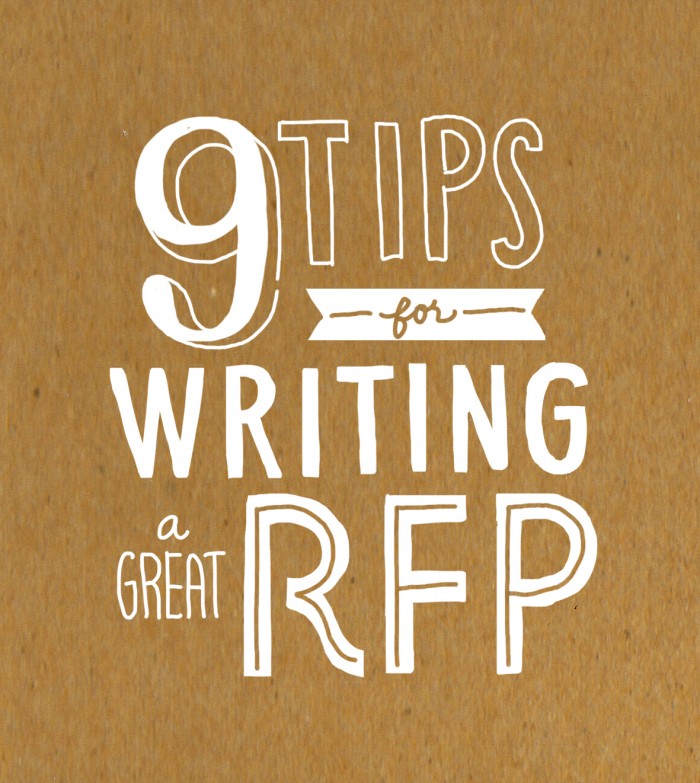9 Tips for Writing a Great RFP
In the consulting world, it is inevitable that at some point, you will need to create and put a Request For Proposal (RFP) out to bid for a new system or tool. We at SUS recently had the opportunity to work with a client on creating an RFP for a new system and are working on requirements for this client to select the tool that works best for them.
While it might seem daunting at first, writing an RFP isn’t rocket science. It does, however, take a lot of practice to write a good one that will help you get you what you need. In my experience with writing RFPs, I’ve come across common mistakes that people tend to make – vague details, bad schedules, and unrealistic expectations for both software and organizational change. However, the more RFPs you have under your belt and with the more systems you design and procure, the better you will get at it. So, here are my tips on how to not only write an RFP that will help you procure the best product on the market, but will also help you avoid those all-too-common mistakes.
1. Take time to write a good RFP
There will always be a time when your organization will need to have “procured something yesterday.” Please do yourself a favor and avoid it when it relates to services and software. If you have a deadline, work backwards and make sure you have enough time to write a good RFP. Not only will taking the time help you procure the right product, but the process will help you think about which users to engage and how to best implement the system. If you take time, this process will help you see what you know, what you don’t know, and any other details that need to be flushed out about what you want product to buy and how you want to implement it.
2. Learn from others
Most likely, you’re not the only one who has purchased or is looking to purchase this system for your organization. I can almost guarantee that there is someone somewhere who has put an RFP out there that is either very similar or exactly the same as what you want. Find out who has done it, call them, and ask them for their RFPs. See what they asked for, how they got those requirements, and talk to them about why or how they ended up with this set of final requirements. Learn from what they’ve done and leverage it to do something different, better, or faster in your organization.
3. Engage your stakeholders early and often
Many organizations procure their IT systems in isolation without stakeholder input – whether it’s about the system, how it could or should be used, how it is to be implemented, and any support that would help them when the system hits their desk. While stakeholder engagement is challenging, it’s important that those designing, procuring and implementing systems speak with the stakeholders who will use and/or interact with the system to find out about how they use the system, current challenges, and how they would like the system to work in the future.
4. Think about integration
There is a tendency to default to a system that is standalone when things get hard, Fight this urge. Think about what you need, think about what exists, and think about those who have to use and interact with the system everyday.
5. Include visuals
I’m talking about diagrams, appendices, pictures – and yes they should be good! This will make your information more compelling and easier to get across to your potential vendor. Lay out your vision, write the text and supplement your RFP with charts, tables, flow charts, etc. The more information you provide your vendor, the more it will help them to design a system that best meets your needs. You need to set the context so the vendor understands what you’re looking for as well as any risks and issues they may come across when they begin to implement the system.
6. You can’t know everything
And that’s ok! Vendors understand that you cannot know everything and are not able to anticipate every little thing that may come up during the procurement or implementation process. What they do need is for you to lay a good framework by working with your stakeholders, gathering requirements, and layering your information so that it flows and provides insight via text, diagrams, and other visuals. They need to see what you want the product to do, who will use it, and how it will be used.
7. Have a writing team of two
While it’s great to have one person write an RFP (and I’ve written plenty myself), it’s usually best to work with a technical editor or advisor. In this most recent case, I worked with a colleague and we were both able to contribute to the writing of the RFP. It’s not just good to make sure all of your bases are covered, but it’s always ideal to have an extra set of eyes on your work.
8. Talk to purchasing before hand
Most of the time this isn’t an issue. Every place I’ve worked with had purchasing at the table early on to help guide the process. No one wants to be caught flat-footed with a lengthy RFP that has to go out to bid ASAP. So make sure you involve them early on and remember, purchasing is your friend and ally who will get you what you want.
9. Remember your end goal
Your end goal is not to simply acquire a tool from a vendor. Your end goal is to make sure that this tool can support the change in your organization that you seek – whether it’s to run better, faster, or for less money.
While these may seem like obvious tips, they’re always good to keep in mind. Call us if you need help, we’re fresh off of writing an RFP so it’s top of mind. Happy procurement!
One response to “9 Tips for Writing a Great RFP”
Leave a Reply
I think it’s a great idea to have a writing team of 2 people when writing RFP. My friend is a business man, and he has to come up with RFPs all the time. I will have to talk to him to see how he does it, and if he has help.









I think it’s a great idea to have a writing team of 2 people when writing RFP. My friend is a business man, and he has to come up with RFPs all the time. I will have to talk to him to see how he does it, and if he has help.